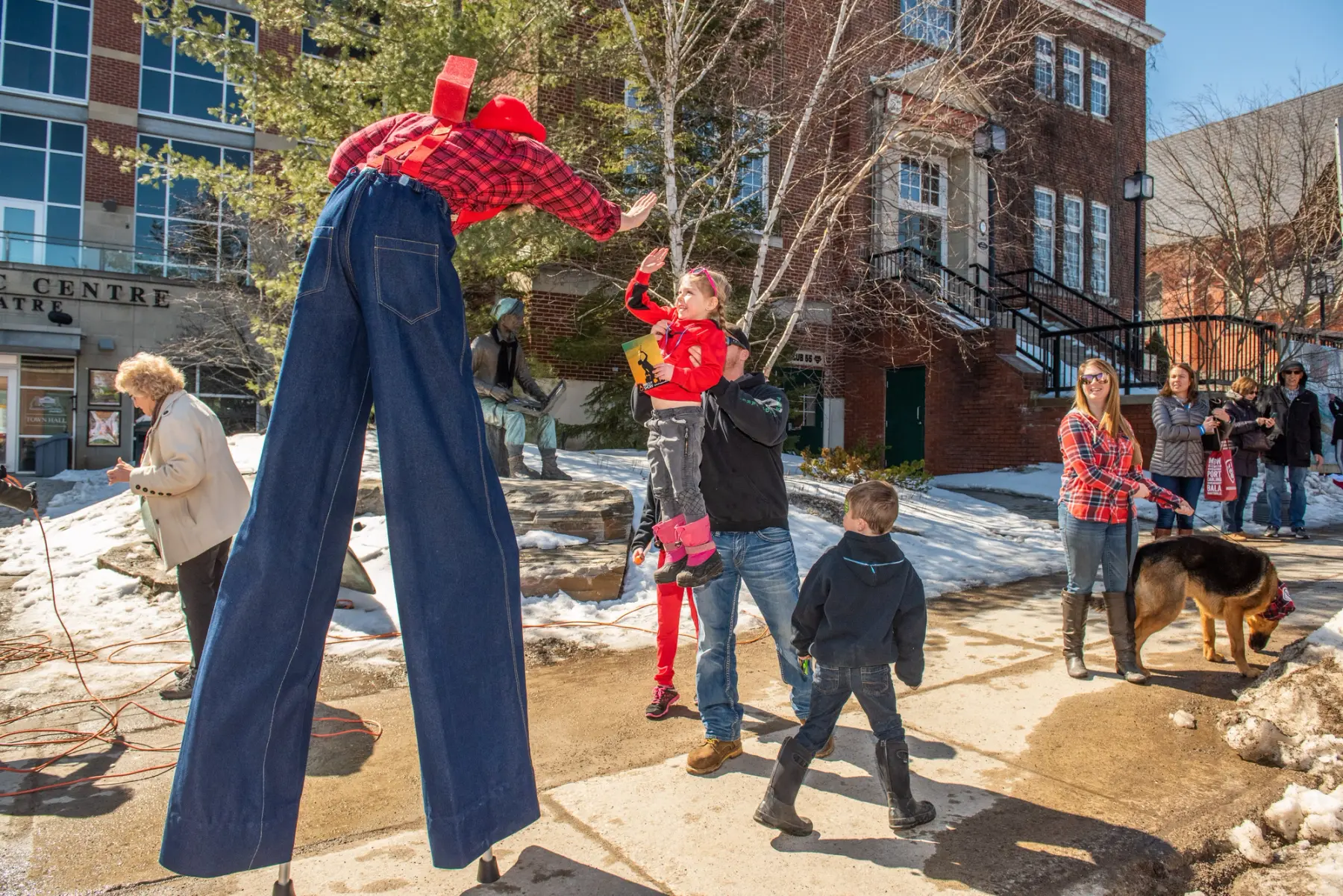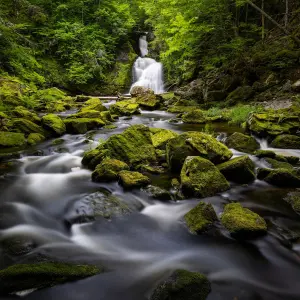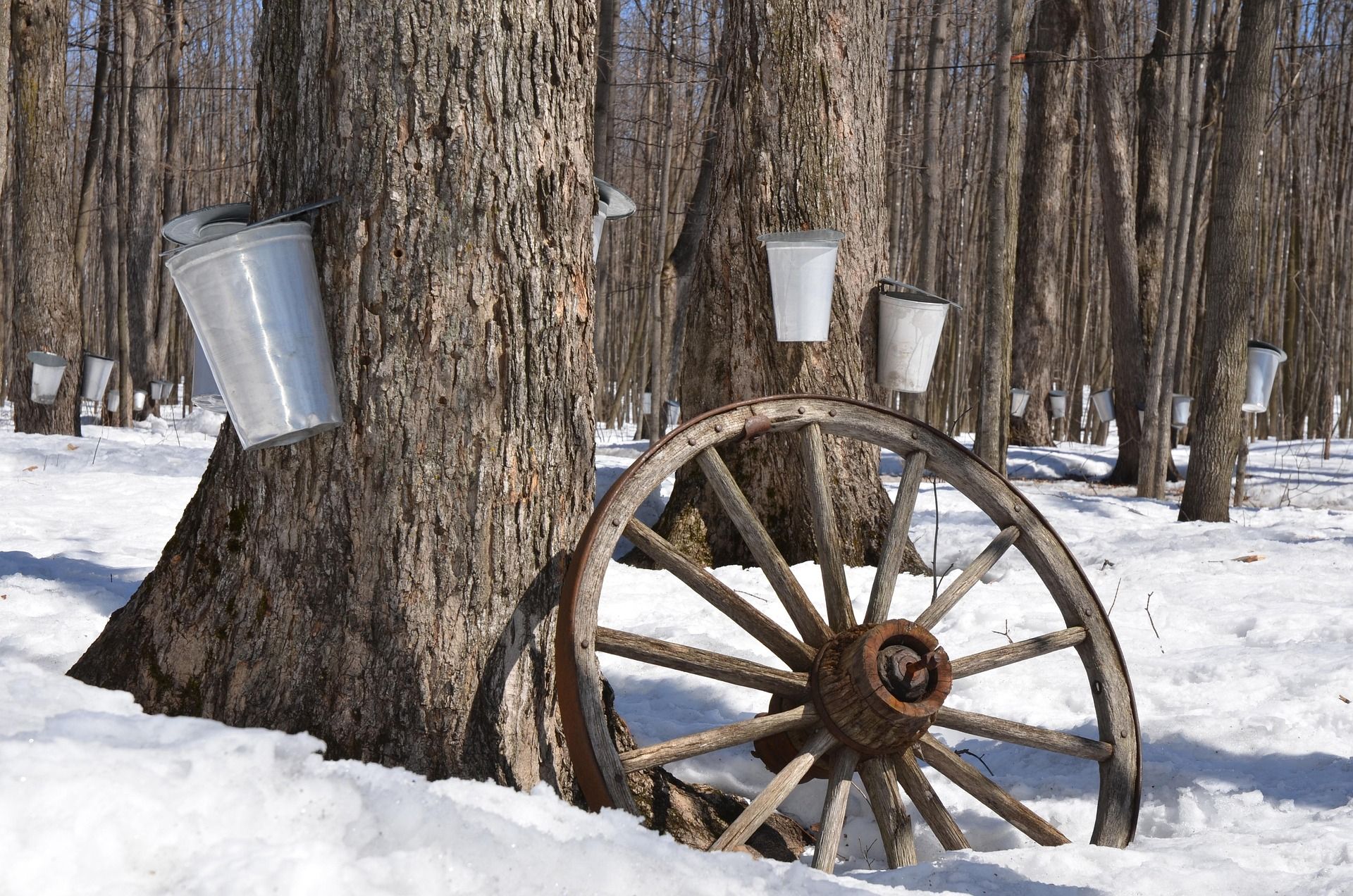
Inspiration
Liquid Gold: The Rich History of Maple Syrup in Canada and Sweet Experiences in Quebec and Ontario
Maple syrup may be a beloved breakfast staple around the world, but in Canada, it’s also a cultural cornerstone. With deep Indigenous roots and traditions that stretch from the sugar shack to fine dining restaurants, this golden elixir tells a uniquely Canadian story. Discover where to savour the season across Canada’s maple belt.
Share
Maple syrup is more than a sweet treat – it’s a quintessential part of Canadian culture and identity, its importance reflected in the sugar maple leaf proudly displayed on the national flag.
As the world’s leading producer and exporter of maple products, Canada commands 71 percent of the global market. Over 64.9 million kilograms of maple products, including Canadian maple syrup, were exported to 68 countries in 2023 alone (with 89.9 percent of that produced by Québec).
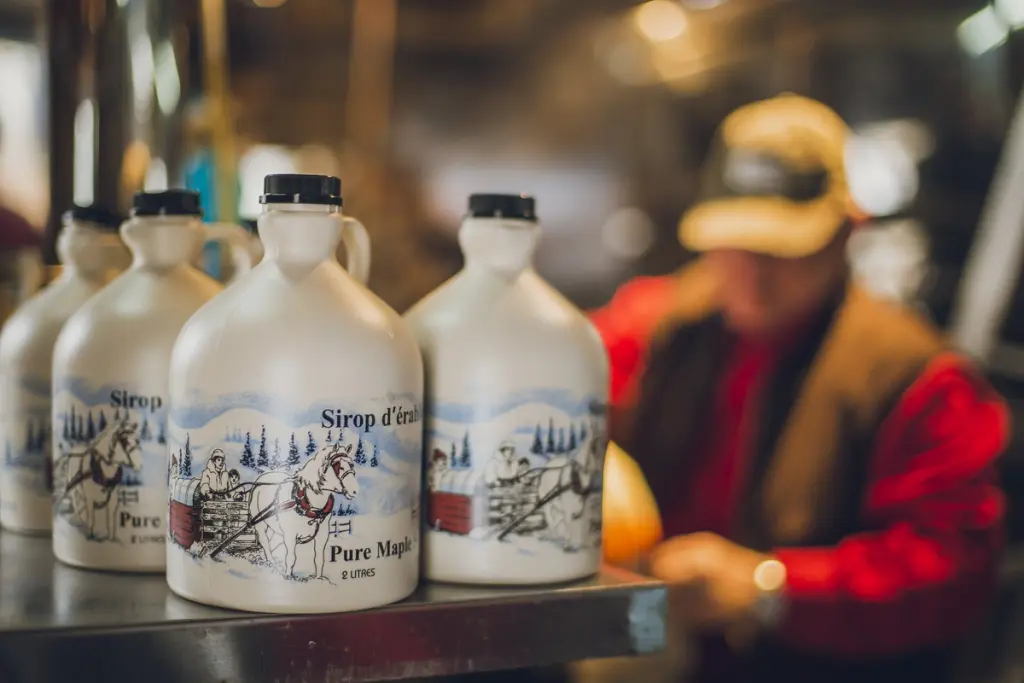
Made from the sap that flows from maple trees, this iconic Canadian ingredient is beloved for its natural sweetness. Pure maple syrup is rich in antioxidants and essential trace minerals like potassium, magnesium, and calcium. Complex in flavour, it lends itself beautifully to both sweet and savoury dishes, shining as the quintessential drizzle over pancakes and waffles. But maple syrup is also what makes classics like maple-glazed salmon, tarte au sucre, butter tarts, and maple-baked beans so irresistible.
Graded by its colour and flavour profile, maple syrup comes in four distinctive classifications. Golden is delicate and light, while Amber embodies the rich, familiar taste of classic maple syrup. Dark brings a robust depth, and Very Dark, with its bold and assertive character, is ideal for cooking.
Beyond its culinary versatility, maple syrup carries cultural significance. For generations, it has been a cherished food source for Indigenous peoples and early settlers. The golden elixir also plays a role in springtime traditions, especially around the spring equinox, which I learn about on an immersive trek through Southern Québec’s sugar bush.
INDIGENOUS ROOTS OF MAPLE SYRUP AND ITS SIGNIFICANCE IN INDIGENOUS CULTURE

The gathering of sweet sap from maple trees has been a historically and culturally significant tradition for the Indigenous peoples of the Eastern Woodlands–including the Abenaki, Anishinaabe (Algonquin), Haudenosaunee (aka Six Nations which includes the Kanien'kehá:ka (Mohawk)) and Mi’kmaq–long before the arrival of the European settlers.
Joining a small group of maple syrup lovers at the Haudenosaunee Mohawk Trail Longhouse, I learn about the significance of the maple tree on a warm March morning. We’re greeted by Niioieren (Eileen) Patton, a Kanien'kehá:ka community elder and teacher at Kahnawake Education Center, who explains that sap can be tapped from trees, including birch, however, the maple tree is unique.
“The maple is special,” Patton tells us. “It’s the leader because it's the first one here that wakes up the rest [of the trees]. That's coming out lately, too, with scientists saying the trees talk to each other.”
As a traditional food source, maple sap was harvested through age-old tapping methods like cutting a V shape into the tree’s bark then inserting a wooden spile (spout) at the bottom of the cut. Besides its use as a cooking liquid, beverage, and/or medicine, the sap was also used to make maple syrup. The latter was done by placing hot rocks into hide buckets, bark baskets, hollowed-out logs or clay pots filled with the collected sap to boil the thin liquid into a thick syrup. I see many of these fascinating artifacts at La Maison Des Peuples Autochtones, the only multi-national museum located outside of the Indigenous community (and tucked within a maple forest) in Mont-Saint-Hilaire, Québec.
At the Musée des Abénakis in Odanak, Québec, I’m introduced to the 13 Moons calendar that starts the year with Sogalikas, the Sugar Moon. Known as a time of transformation, this is when the earth “awakens,” and the temperature rises above freezing. Typically occurring from mid-March to early April, the daily freeze-thaw cycle–cold nights followed by warm days–is what makes the sap flow.
The practice of maple sugaring is still maintained by many Indigenous communities and is tied to cultural and seasonal traditions, including the Spring Equinox, which marks the end of winter and start of spring.
EUROPEAN INFLUENCE AND EVOLUTION
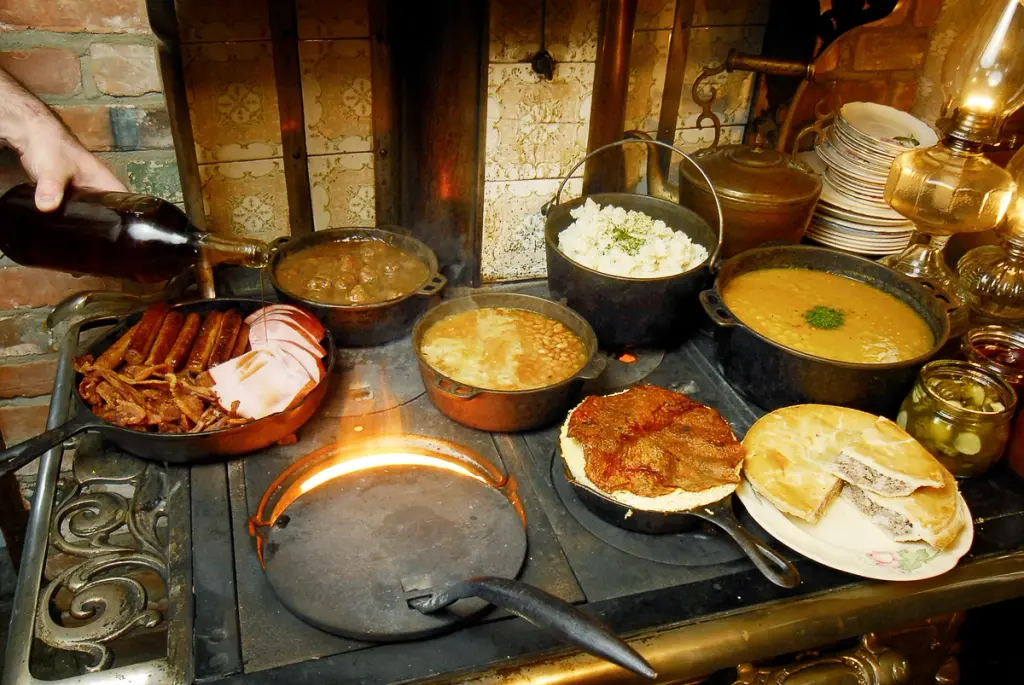
European colonists settling into the area learned how to turn the sap into sweet and medicinal maple syrup from Indigenous peoples. Instead of the spile, they gathered sap via buckets hung from wooden spouts inserted into holes drilled in maple trees. They also used metal tools, including copper, brass or iron pots that could process larger volumes of sap over fire. Both methods reduced the time and labour required to make maple syrup and maple sugar. To protect the fire from the wind and snow, they constructed shelters over the boiling cauldrons of sap, which became known as sugar shacks (cabane à sucre).
By the mid-19th century, the tradition of sugaring off became widespread in communities found along the Maple Belt–the hardwood deciduous forest stretching from Ontario, Québec, New Brunswick, to Nova Scotia. Production efficiency and quality continued to improve with time, and instead of cauldrons, maple syrup makers opted to boil sap in evaporators, aka flat metal pans with large surface areas.
We see this in action just after our group takes a horse-drawn wagon ride to tour the village-like centre of Sucrerie de la Montagne. Stefan Faucher, standing beside a traditional wood-fired evaporator, offers us a glimpse into the past as he explains how sap from the Québec Heritage site’s 120-acre grove of century-old maple trees is transformed into maple syrup. To fully immerse ourselves in the French-Canadian tradition his father, founder Pierre, has made popular, we visit the sprawling 350-seat dining hall where we feast on sugar shack classics like pea soup, sugar-cured country ham, meat pie and more. Against a background of live music and rhythmic spoons (percussion instruments), I’m introduced to a curiously delightful dessert practice that tops a thin pancake with a slice of sugar pie and maple syrup. To my surprise, this combination of carbohydrates is remarkably well-balanced and irresistibly addictive (and I've been enthusiastically recommending it to anyone willing to listen!).
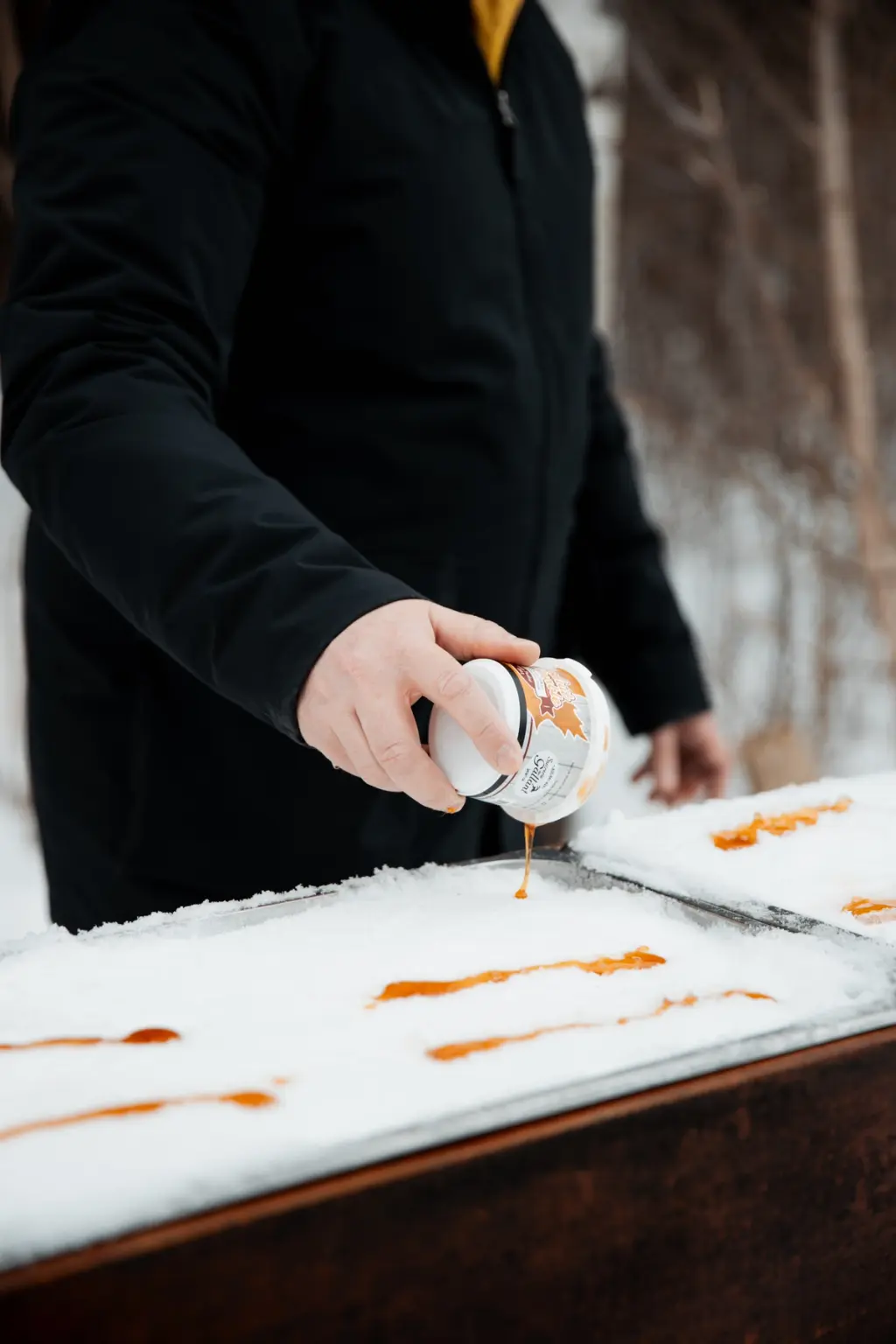
I learn about other technological advances that have revolutionized the process, such as the adoption of vacuum-tubing systems that are used in Auberge des Gallant’s sugar bush. These systems, which are more efficient and sanitary than traditional bucket collection methods, transport sap directly from the trees to the sugar shack. We witnessed this firsthand at the 4-star countryside inn’s sugar shack pavilion, where guests can follow every stage of maple syrup production — from sap harvesting to the creation of various maple products — during the maple season, which runs from March to April at the on-site sugar mill. While there, do stick around for a traditional sugar shack meal in their log cabin setting but be sure to make room for the still crispy maple syrup dipped fried croissants that are everything a fresh cronut aspires to be.
MODERN-DAY TRADITIONS AND EXPERIENCES
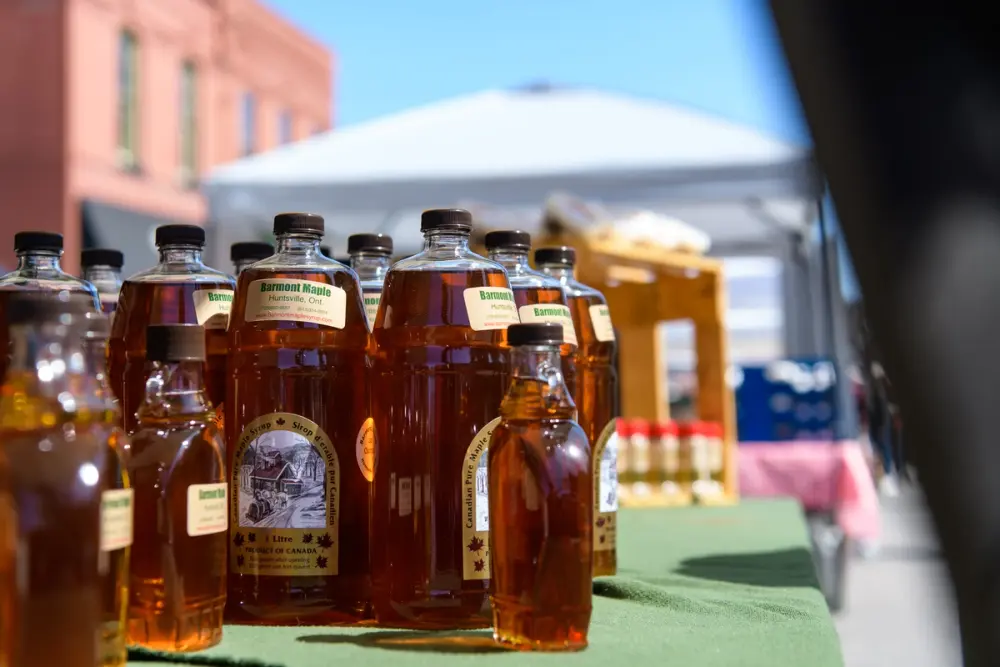
In 2021, the Québec Council of Living Heritage (CQPV), in partnership with the Ministère de la Culture et des Communications du Québec, recognized the traditions associated with maple syrup as an “Intangible Heritage for Local Cultural Vitality.” From charming cabane à sucre to lively festivals, there's no shortage of delightful ways to honour the country’s beloved liquid gold.
It’s easy to take a deep dive into everything maple syrup with a trip to a sugar shack. This is where I’ve found welcoming long communal tables filled with scrumptious, rib-sticking spreads of traditional French-Canadian fare that I share in the company of friends and neighbouring diners.
I especially enjoy the family-friendly La Cabane du Coureur at Le Coureur des Bois' farm in St-Marc-sur-Richelieu which specializes in a modern, gastronomy-focused sugar shack experience. Here, executive chef-partner Jean-Sebastien Giguère—whose culinary pedigree includes Toqué! and Au Pied de Cochon's Cabane à Sucre serves refined takes on traditional dishes. The classic side dish of oreilles de crisse (deep-fried salted fatback) arrives as the garnish on split rolls overflowing with sweet Nordic shrimp salad. There’s hearty cassoulet enriched with foie gras, fresh focaccia blanketed with truffle-dusted burrata, plus an impressive spread of seasonal vegetables and flavourful starches. Staying true to sugar shack traditions, every table comes with the venue’s own maple syrup for limitless drizzling. As a bonus, there’s a fully vegetarian menu for meat-free diners, an outdoor tire d’érable (maple taffy) table, and even a petting zoo for added family fun.
In Ontario’s maple country, I’ve enjoyed exploring The Muskoka Maple Experience during March and April. Maple-themed activities include hiking or joining a wagon ride through a sugar bush, touring maple sugaring facilities, and indulging in maple-inspired treats from various food and beverage partners. I’ve stayed at Deerhurst Resort, which has an onsite sugar shack (operated by Sweet Muskoka), and participated in the many maple-themed experiences they schedule for the season. If you visit at the end of April, you’ll be able cheer on the kids participating at the annual The Sap Run that’s followed by the free, family-friendly Muskoka Maple Festival held on Main Street in downtown Huntsville.
Maple syrup is far more than an ingredient – it embodies Canada’s history, culture, and traditions. From its Indigenous roots to its role in European settler practices and modern-day creations, maple syrup carries a cultural significance that transcends its sweet taste. Today, the ritual of gathering at sugar shacks or indulging in maple-drenched treats keeps the heritage alive while bringing people together. As a sweet symbol of Canada, I love gifting maple syrup or maple sugar because it represents Indigenous traditions, its communities, Canadian identity and its terroir. Also, because it’s delicious.

Renée S. Suen
Contributor
Renée S. Suen is a Toronto-based restaurant and travel journalist and photographer who searches the world for memorable tastes and the stories behind the plate. She is a columnist at SingTao’s EliteGen, and a contributor to Toronto Life, Toronto Star, Chatelaine, re:Porter and more. Known for her insatiable appetite, the former academic scientist has been covering the Canadian food scene for nearly two decades and serves as the Mid-USA and Mid-Canada Academy Chair for The World's 50 Best Restaurants, Canada Central Academy Chair for North America’s 50 Best Restaurants, and is the head Toronto judge for the Canadian Culinary Championship.
